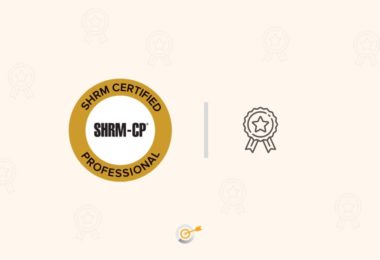
Overview of Six Sigma Certification
Six Sigma was originally conceived as a qualitative management approach to eliminate or minimize any defects in the production process or the provision of services. Along these lines, one concept that became popular later than Six Sigma is Lean manufacturing or Lean services. The lean process attempts to remove any processes that do not add value to the business. Six Sigma has the same goal as the Lean process – reduce and, eventually, eliminate waste.
The only identifiable difference between Six Sigma and Lean is how they identify ‘waste’ in a business process. Traditionally, the difference between choosing Six Sigma certification or Lean process certification can be defined as follows.
- Six Sigma defines waste as a variation within business processes. If you’re someone who believes in a consistent process, you’d probably be most comfortable with this type of certification.
- Lean Six Sigma is a combination of the Lean methodology and the Six Sigma methodology. It defines waste as anything that doesn’t add value to the finished product. If you’re looking for an emphasis on efficiency, then you’d probably prefer Lean Six Sigma certification.
Many training institutions today are offering Lean Six Sigma – combining the principles of Lean and Six Sigma to offer services that can be tailored to individual businesses. Six Sigma also varies from Lean in the way that it is industry-agnostic. It can be applied to any business process, whether it is a product or a service. Lean is typically used in the production process. Six Sigma operates efficiency development using a method called DMAIC. It stands for
- Define: In this first step, you will define the problem and how it is affecting the current process.
- Measure: During this step, you will measure the current data. By examining the process that is already in place and identifying what isn’t working, you can begin finding ways to make improvements.
- Analysis: Now that you have measured all your current data, you can begin analyzing it to get to the root of the problem.
- Improvement: This is the step where you will come up with solutions, test your solutions, and make improvements as needed.
- Control: Once you have implemented a new process, you must continue to make improvements over time. These changes will only last if employees continue to refine and maintain the process.
Six Sigma also operates on a six-cycle process where it measures the errors as parts per million. The word Sigma is a reference to statistical analysis tools that measure the performance of a company. The word six is a reference to the cycles that a company has to undergo before it reaches peak performance. These cycles and the errors tolerated per million are
- Level 1: Errors or defects per million are 690000
- Level 2: Errors or defects per million are 308537
- Level 3: Errors or defects per million are 66807
- Level 4: Errors or defects per million are 6210
- Level 5: Errors or defects per million are 233
- Level 6: Errors or defects per million are 3.4
To put it into context, these levels helped GE save $350 million in 1998 and Motorola $1B in 2005.
Recommended Articles
How to Get a Business Analyst Certification
What are HubSpot Certifications and How to Get Them?
What are the Eligibility Criteria and the Certification Process for Six Sigma Certification?
There are no prerequisites for any level of Six Sigma certification. So, for achieving any belt, you need to achieve the previous belt. There are 5 ‘belts’ that Six Sigma offers as certification. However, there is no certifying body for Six Sigma. There are ASQ and IASSC that are recognized for the quality of the training they provide. Apart from that, several institutes follow their own methodology for training individuals. The concepts and the training that needs to be given at each belt remains consistent across all training providers. What changes is the certification process. The five belts are
- Six Sigma White Belt: It is the basic level of certification that deals with the basic Six Sigma concepts. White belts support change management in an organization and engage with local problem-solving teams that assist projects.
- Six Sigma Yellow Belt: At this level, you know the specifics of Six Sigma, how and where to apply it. You will support project teams on problem-solving tasks.
- Six Sigma Green Belt: At this level, you understand advanced analysis and can resolve problems that affect quality. Green belts lead projects and assist black belts with data collection and analysis.
- Six Sigma Black Belt: Black belts are experts and agents of change. They provide training in addition to leading projects.
- Six Sigma Master Black Belt: This is the highest level of Six Sigma achievement. At this level, you will shape strategy, develop key metrics, act as a consultant, and coach black and green belts.
The Council of Six Sigma maintains the body of knowledge that is required for certifications in yellow, green, and black belts. IASSC stands out from all the training providers because it doesn’t offer any training. It doesn’t require any hands-on training or completion of any project, either. The concepts are all eschewed under IASSC Universally Accepted Lean Six Sigma Body of Knowledge. For IASSC, you just need to write an exam to become certified.
This is not necessarily the case with other training institutes. Council of Six Sigma accredits training institutes. This does not mean that accreditation is compulsory for training institutions. Several providers require that you complete a project after you’ve written the exam to be certified under any belt.
These projects, depending on the training provider, may last anywhere between 5-9 months. Yet other training providers just require you to complete the training with them and write an exam. The reason is the difference in the perception of Six Sigma. Some provide it from a role-based perspective, while others look at it as a concept and need the candidate to equip themselves with fundamental knowledge.
What is the Cost of Certification and the Salaries?
The cost of IASSC certification for Yellow Belt is $195, Green Belt is $295, and Black Belt is $395. The average salaries for Black belt certified individuals range around $119000. Irrespective of the belt, the median salary for all Six Sigma certified individuals hovers between $70000 and $140000.
Where to Get Online Resources for Certification?
Each individual training provider offers training materials and resources, depending on their training program. So, two training programs are alike. That’s why, before you choose a program, you have to understand how Six Sigma can benefit your organization and your role. Basing on those requirements, you should choose the training provider. There are a lot of training providers, including KPMG, EY, Simpli Learn, Udemy, IASSC, ASQ, etc. Chances are, your organization itself provides you the necessary training required to certify you as a Six Sigma professional.




